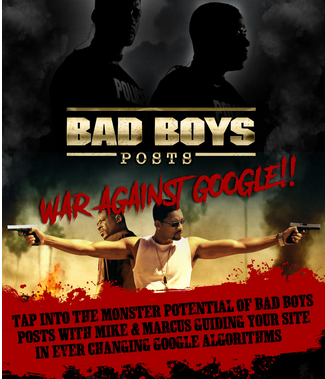Analyzing the Popularity of Bad Boys in Pop Culture

Fashion designs have been celebrated for their effect on trends and design, surrounding national perceptions and redefining notions of splendor and elegance. Among these celebrities will be the "High Authority links" of fashion—results who defy conventional norms, problem old-fashioned appearance, and embody a edgy heart that captivates readers worldwide. In this information, we explore the position of fashion symbols who have expanded type through their bold personas and distinctive sartorial choices.
1. Embracing Non-Conformity:
Fashion icons frequently obtain celebrated status by embracing non-conformity and pushing the boundaries of conventional fashion. Poor kids like James Dean in his leather coat and trousers or Johnny Depp along with his eclectic mixture of bohemian and rock-inspired attire epitomize that edgy spirit. Their refusal to adhere to mainstream traits inspires a sense of freedom and identity among their admirers, encouraging self-expression through apparel and accessories.

2. Placing Tendencies:
One of many primary tasks of fashion symbols, particularly bad boys, is their capacity to set traits that resonate across generations. Celebrities such as for instance Brian Bowie along with his gender-bending type, or Mick Jagger along with his flamboyant period outfits, have influenced fashion movements from glam steel to punk and beyond. Their courageous testing with apparel and makeup has not only described their personas but in addition forced fashion ahead, challenging developers and people to reconsider old-fashioned gender functions and artistic norms.
3. Cultivating Mystique and Personality:
Bad boys of fashion frequently cultivate an atmosphere of mystique and charisma that captivates audiences both on and off-screen. Numbers like Marlon Brando in "The Crazy One" or Wayne Dean in "Rebel With out a Cause" exuded a brooding intensity that translated to their fashion choices—believe bike coats, bright tees, and denim—as representations of youthful revolt and psychological depth. Their easy greatness and raw sensuality continue steadily to inspire makers and fashion fanatics seeking to fully capture that evasive mixture of charm and style.
4. Tough Sexuality and Cultural Limits:
Fashion celebrities who embody the bad boy character often concern sex and national boundaries through their design choices. Icons like Prince, along with his flamboyant and androgynous clothes, or Kurt Cobain, together with his grunge-inspired flannel tops and unkempt aesthetic, subverted traditional notions of masculinity and femininity. By blurring these lines, they extended the definition of fashion as an application of self-expression that transcends societal norms and expectations.
5. Striking Subcultures and Actions:
The effect of bad boy style designs stretches beyond individual style possibilities to inspire whole subcultures and style movements. From the mod styles of The Beatles to the punk revolt of Sid Bad and the Intercourse Guns, these icons turned icons of countercultural opposition and cultural change. Their clothing and attitudes reflected a rejection of mainstream values, advocating for private freedom, political activism, and creative expression through fashion.

6. Heritage and Enduring Impact:
Probably the most important position of bad boy style designs is based on their enduring heritage and influence on contemporary style. Decades after their heyday, symbols like David McQueen's amazing casual beauty or David Dean's rebel elegant continue to motivate runway selections, streetwear tendencies, and fashion editorials. Their ability to recapture the zeitgeist of the era while maintaining relevance in contemporary style underscores their status as true designs of design and attitude.
In summary, the role of fashion icons, particularly bad guys, can not be overstated in the region of style and ethnic influence. Through their exciting personas, distinctive sartorial choices, and edgy spirits, these icons have changed style as a form of creative appearance, cultural critique, and particular empowerment. Their history continues to form the way we see and engage with fashion, reminding people that true fashion transcends trends—it embodies identity, imagination, and the courage to concern the status quo.
